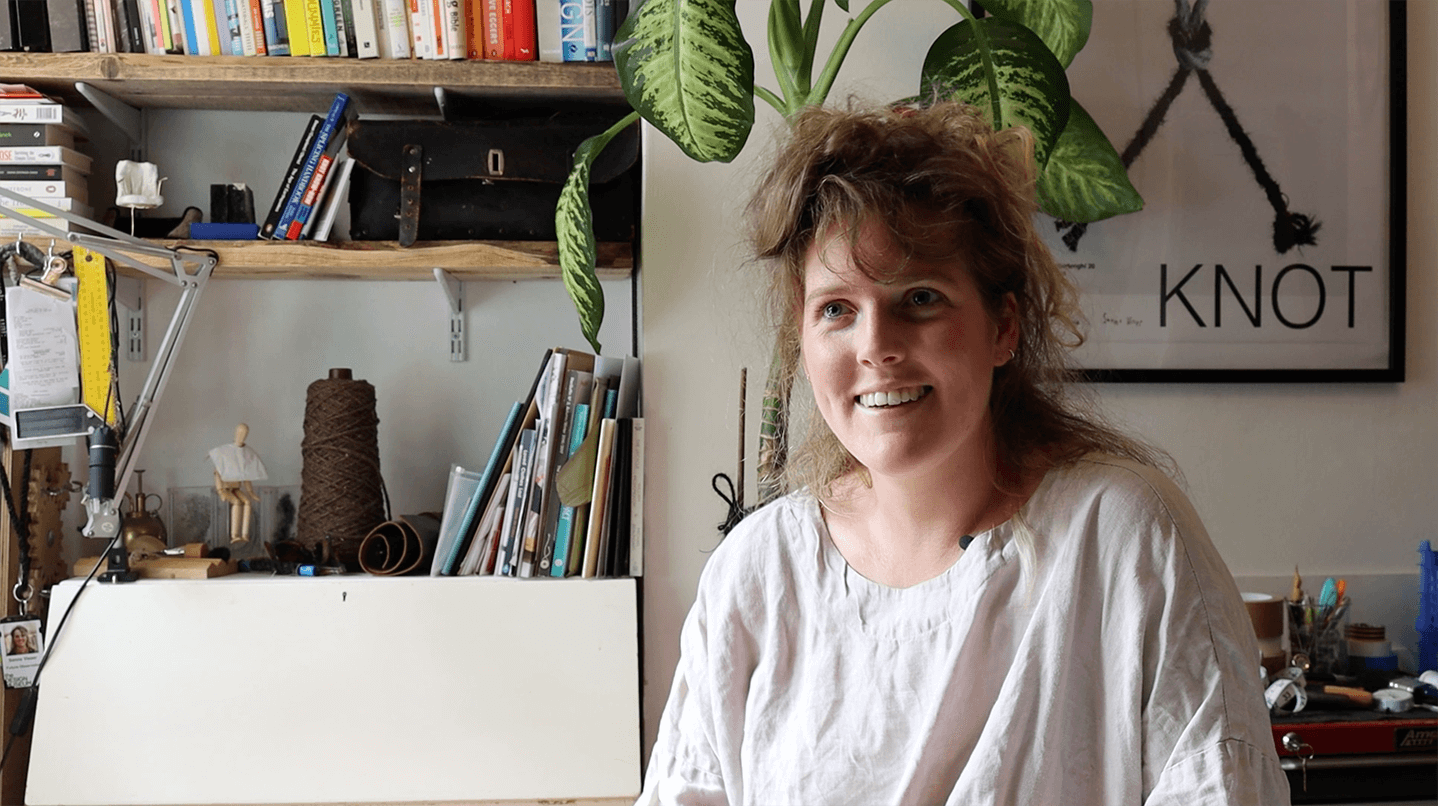
Sanne Visser: Human hair within the circular economy

- Written byYana Kasa
- Published date 03 April 2023

Sanne’s PhD is focused on one particular material - human hair.
“I have worked with hair for a few years, making yarn from it, making ropes from it and then with the ropes making different products again. That’s a more traditional crafts approach.”
The research investigates the processes or systems needed to repurpose human hair for it to fit in a circular economy. Sanne is focused on participatory design research methods and working across multiple disciplines, from hairdressers to scientists and anthropologists.
The initial reaction from people is usually of surprise or shock, but once they learn more about the research, they grow interested. “It’s an interesting relationship, we can all relate to it but we’re also still quite sceptical. It raises many questions about how we should be sceptical about many other materials. It brings a lot of topics.”
After completing a bachelor’s degree in lifestyle and design, as well as a material futures course at Central Saint Martins, Sanne wanted to focus on design practice. This prompted her PhD at the Centre for Circular Design at Chelsea College of Arts, UAL.

“I’ve always been interested in creative practices from a young age” Sanne says. “But then from more intuitive practices and arts practices, from drawing and photography, I wanted to go into applied design within society and understand what current issues are happening environmentally, socially, culturally… and how can I as a designer can actually have an impact on these issues.”
For a residency with the Design Museum, Sanne worked with hairdressers within a one-mile range of the museum to explore every step of the process - from collecting and handling the hair, looking at the challenges and barriers that might come with it.
“Within that residency I was quite excited to work with a lot of people, I worked with a filmmaker to make two films. But also raising some questions about ethics, economic value, social value and so on. I created three projects which enable the hair recycling system.”

Not knowing the area or the people that live and work in it made it an interesting overall experience. Working in such close proximities with the hairdressers allowed Sanne to get to know their businesses and develop a close relationship with them. Throughout the residency, she was able to understand the systems and the issue that might come with using human hair as a material. “One of the barriers I have discovered is that the hair gets contaminated in the collection process.” Sanne says. But she found a solution: “I actually designed a barber's chair that catches hair as it gets cut and then a gown too.”
With a few more years of her PhD left, Sanne is hoping to explore more of the systems of her project. Keeping her keen interest in human hair as a material, she’s looking at what policy might need to be put in place or if there are any holistic perspectives.
The PhD is intertwined with the studio work she does as an independent designer working on exhibitions.
“The research I do is at the centre - We did a project about circular wool in the UK which has so many links to the research I do.
“There are so many things that are happening, but they all fit together.”